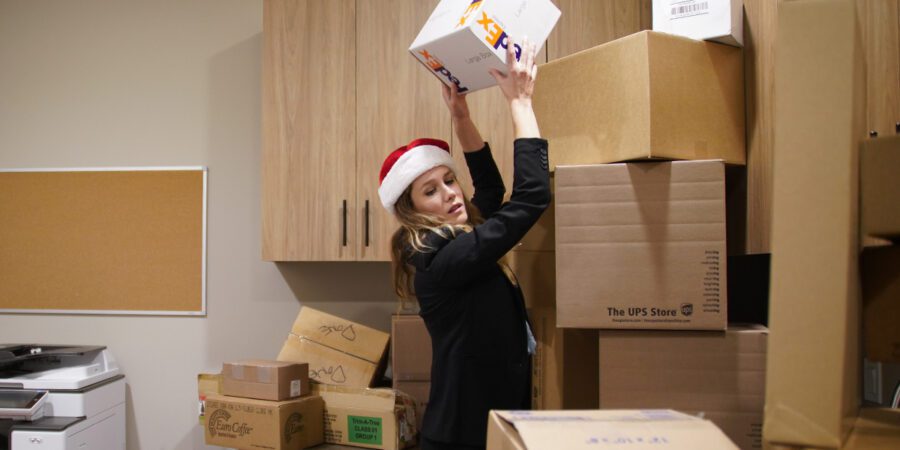
Multifamily
5 Strategies For Reducing Operating Costs
Written by: Parcel Pending
7 Min Read
Published: October 3, 2019
Updated: March 29, 2023
As a property manager of a multifamily unit, your goal should be to identify areas where you can simultaneously improve tenant satisfaction and cut operating costs. Whether that be by installing an efficient apartment package delivery system or by providing an in-house team for preventive maintenance, the more ways you can decrease overhead and expenses, the more profitable you’ll be. Further, lowered costs yield increased cash flow, which makes it easier to sell the property, even in a competitive market.
Now, actually reducing operating costs is easier said than done, particularly due to the fact that wages, utilities, and expenses have continually increased in cost. However, there are some common problem areas that regularly crop up in multifamily apartments worth considering. Below, you’ll find 5 strategies property managers can take to reduce costs and improve tenant satisfaction.
Property Expenses 101
The figure you always want to be aware of when managing any business or property is your Net Operating Income (NOI), which according to Investopedia is:
Net operating income (NOI) is a calculation used to analyze the profitability of income-generating real estate investments. NOI equals all revenue from the property, minus all reasonably necessary operating expenses. NOI is a before-tax figure, appearing on a property’s income and cash flow statement, that excludes principal and interest payments on loans, capital expenditures, depreciation, and amortization.
Your NOI is found by taking your multifamily unit’s total revenue and subtracting operating expenses. The lower the expenses, the higher your NOI. Therefore, you want to do everything in your power to increase the NOI, which is especially important when figuring the total value of the property. If an investor is choosing between two similar buildings, located right next to each other, the building with the higher NOI will be in higher demand, and thus sold for more money.
5 Strategies For Reducing Operating Costs
If your goal is to decrease operational costs and increase NOI, consider taking the following actions:
#1 Install Smart Lockers
Your time is limited. So is your staff’s. There are only so many hours in the workday that can be spent on any given task. As a result, it’s prudent to find ways where you can save time or energy. In recent years, one of the most common problems that property managers have had to face and manage is the rapid influx of packages being delivered on a daily basis. Even properties that do have mailrooms are typically ill-equipped and understaffed when it comes to managing dozens upon dozens of packages.
Frankly, you’re not a mailman. Your job description has nothing in it about accepting, sorting, storing, and delivering mail to tenants. That’s where Parcel Pending’s smart lockers come in. Serving as an efficient property management tool, they make package management easy by providing you with high-tech lockers that ensure simple and secure delivery (and retrieval of packages or any type of online order).
Adding smart lockers to your property will reduce operating costs by:
- Eliminating hours of time wasted daily spent on accepting, sorting, and distributing packages to tenants.
- Giving tenants a sense of security and increasing their satisfaction with their apartment complex. By making their lives more convenient, you can increase resident retention by making it harder for them to justify moving out.
- Reducing interruptions and distractions caused by lost or misplaced packages.
- Preventing clutter and a logjam of tenants all trying to find their packages around the same time they’re all back from work.
If your residents feel safe and secure, they’re far more likely to want to remain there. In fact, a survey conducted by Cortland Partners properties found that the installation of lockers led to an increased resident renewal rate by 40%. Just one stolen package can plant seeds of doubt as to the security of a tenant’s home. Fortunately, such amenities serve as a package theft deterrent, leading to the safe delivery of packages and increased tenant satisfaction. Additionally, they only require modest upfront costs, which pay dividends immediately. This strategy
#2 Cut Water Costs
Your tenants will use tons of water on a regular basis for anything from showering to doing dishes to cleaning their clothes. But when tenants aren’t paying for their water usage and instead pay a flat fee for utilities, they’re far more likely to take 30-minute showers or use more water than they normally would.
According to studies by the Water Scrooge, the average property manager is overpaying on water expenses by approximately $500 per unit per month. All told, that can represent thousands in potential cost savings. For example, one 70-unit building got smart about its water consumption, reduced output by optimizing and thus saving more than $35,350 annually, or about $505 per unit.
But how do you do this?
It’s simple. Consider the following steps:
- Calibrate toilets – Fine-tune your toilets to ensure that they’re using minimal necessary water levels. By replacing some small components, you can prevent leaks, water cycling, and accumulated pressure.
- Install shower regulators – Your tenants may try and change out the showerhead to another option that increases water output. To prevent this, install tamper-proof showerhead Doing so will ensure that every shower is running the same gallon per minute output and make it easier for you to keep water costs down.
- Install aerators – Faucets for the bathroom or kitchen sink can be large sources of waste. If your units are older, it may be wise to install newer aerators that also limit the gallon per minute output in any sink.
#3 Go Green
Electricity is another expense that can quickly get out of hand, particularly with outdated units. By going green and increasing energy efficiency, you can make enormous cuts into your monthly bills. Ways to reduce the energy consumption for your rental property include:
- Changing to LED bulbs
- Switching to artificial grass to cut landscaping costs
- Installing energy-efficient appliances such as smart fridges, dishwashers, laundry machines, and thermostats
Not only do changes such as these reduce your operational costs and help for the future of property management, but they also make you a more attractive option for millennial renters who make up the largest portion of all renters. Given that sustainable practices are an apartment trend that is highly desirable amongst millennials, you can be sure that you’ll fill those vacant units if you implement some of these changes.
According to AMLI Residential’s 2019 report:
Millennials reported feeling particularly concerned about climate change and expressed a heightened desire to solve environmental problems, followed by Gen X, Gen Z and lastly baby boomers, according to the company’s third annual Sustainable Living Index, a survey of more than 3,500 AMLI apartment residents. Also in that order: each demographic’s willingness to pay more for green features, with more millennials expressing that willingness than any other group. Overall, more than 61% of AMLI residents, regardless of age, responded they would be willing to pay more to live in a sustainable community.
#4 Preventative Maintenance
If your goal is to reduce expenses, instead of simply waiting around for problems to crop up that require maintenance or repairs, put strategies in place to prevent such things from even occurring. Typically, it’s far less costly to replace or fix a problem in the early stages than to wait for it to get out of hand.
According to Steve Jankowski, “A solid preventative maintenance program extends the life of major mechanical machinery,” Jankowski says. There’s also a big payoff if you “invest in the equipment to perform maintenance in-house, such as augers and pressure washers, rather than using outside vendors.”
Taking preventative actions not only cuts your costs but also demonstrates to your tenants that their comfort and well-being matters to you. So, consider hiring an in-house team for maintenance that is tasked with fixing and maintaining the property regularly. Enlisting their services will reduce the time to fix problems and decrease the cost of hiring outside services on a moments’ notice.
#5 Appeal Your Property Taxes
Taxes quite often end up being the largest expense any property manager will have to handle on an annual basis. Many property managers and apartment owners do not realize that you can appeal your property taxes, especially if they have been increased dramatically. Therefore, it may be wise to hire a tax appeal expert.
By hiring someone knowledgeable in the rules and regulations of property tax taxation (especially if they’re specific to your sector), you can ensure that you are paying no more than necessary due to the following:
- They can find local loopholes
- They can identify factors that technically diminish the property’s value
- They understand cap rates
According to CCIM, “For example, if a property is over-assessed by a million dollars, an appeal might result in a savings of $25,000 or more — 20 percent to 30 percent of which might be paid to the tax appeal analyst. Depending upon the market and property size, an owner may be able to find a tax expert to handle the process for a fixed rate ranging from $2,500 to $5,000.”
Cutting Operating Costs
Fortunately for you, there are simple steps you can take as a property manager to reduce operating costs. Whether it’s upgrading to smart parcel lockers or hiring an in-house maintenance team to sniff out problems before they become worse, rest assured that you’re moving in the right direction and on your way to some serious cost savings.
Sources:
- Kenton, W. Investopedia. Net Operating Income (NOI). (2019). https://www.investopedia.com/terms/n/noi.asp
- Parcel Pending. Cortland Uses Parcel Pending Lockers to Delight Residents. /en-us/spotlight-cortland-partners-uses-parcel-pending-lockers-delight-residents/
- The Water Scrooge. Langsam Property Services. https://www.thewaterscrooge.com/case-studies/langsam
- BusinessWire. AMLI Residential 2019 Sustainable Living Index. (2019). https://www.businesswire.com/news/home/20190807005608/en/
- Nimkoff, L. CCIM Smart Property Management Strategies. https://www.ccim.com/cire-magazine/articles/smart-property-management-strategies/?gmSsoPc=1



